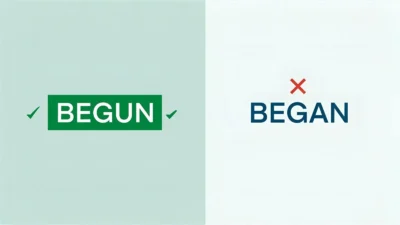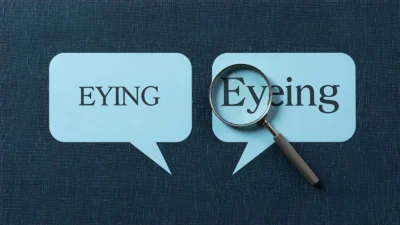If you’ve ever written the phrase “tying a knot” or “tieing your shoes,” you may have paused, unsure which spelling is correct. This confusion is common, and that’s why so many people search for “tying or tieing.”
English spelling rules sometimes shift depending on how root words change with suffixes. In this case, the base word “tie” seems like it should keep the “e” before adding “-ing.” However, the truth is slightly different.
This article clears up the confusion once and for all. You’ll learn the quick answer, why this spelling issue exists, how British and American English differ, and which form you should use in everyday writing.
We’ll also cover common mistakes, real-world examples, and usage trends. By the end, you’ll never hesitate again when typing this word.
Tying or Tieing – Quick Answer

The correct spelling is “tying.”
- ✅ I am tying my shoelaces.
- ❌ I am tieing my shoelaces.
The word “tieing” is not standard and is considered incorrect in modern English.
The Origin of Tying or Tieing

The root word “tie” comes from Old English tīegan, meaning to fasten or bind. When adding the suffix “-ing” to words ending in “ie,” the “ie” changes to “y.” That’s why “tie” becomes “tying” and “die” becomes “dying.”
Historically, “tieing” occasionally appeared in old texts, but it has largely disappeared from usage. Dictionaries and style guides today recognize only “tying.”
British English vs American English Spelling

Both British and American English agree that “tying” is correct. Unlike words such as color/colour or analyze/analyse, there is no accepted difference here.
Comparison Table: Tying vs Tieing
| Form | British English | American English | Correct Usage |
| tying | ✅ | ✅ | Standard |
| tieing | ❌ | ❌ | Incorrect |
Which Spelling Should You Use?

- In the US → Always use “tying.”
- In the UK/Commonwealth → Same rule applies: “tying.”
- For global readers → Stick with “tying.” It’s universally correct and understood.
Simply put: “tieing” has no place in professional or casual writing today.
Common Mistakes with Tying or Tieing

- ❌ She is tieing the ribbon. → ✅ She is tying the ribbon.
- ❌ He kept tieing his shoes again. → ✅ He kept tying his shoes again.
- ❌ The boy is dieing of laughter. → ✅ The boy is dying of laughter.
Mistake pattern: people forget the “ie → y” spelling rule.
Tying or Tieing in Everyday Examples

- Emails: “Thank you for tying up the loose ends before the meeting.”
- News: “The rescue team is tying ropes to secure the area.”
- Social Media: “Spent the afternoon tying balloons for the party!”
- Formal Writing: “Tying evidence together requires careful analysis.”
Notice that “tying” fits naturally in all these contexts.
Tying or Tieing – Google Trends & Usage Data

Google Trends shows that “tying” dominates searches worldwide, while “tieing” only appears due to spelling errors. Countries like the US, UK, Canada, and Australia overwhelmingly use “tying.”
| Keyword | Global Usage | Accepted in English | Dictionary Entry |
| tying | 99% | Yes | Yes |
| tieing | <1% | No | No |
FAQs about Tying or Tieing
Q1: Which is correct – tying or tieing?
A1: Tying is correct. Tieing is incorrect.
Q2: Why is it tying and not tieing?
A2: Because words ending in “ie” change to “y” before adding “-ing.”
Q3: Is tieing ever used?
A3: Rarely in old texts, but not in modern English.
Q4: Does this rule apply to other words?
A4: Yes. Example: die → dying, lie → lying.
Q5: Can I use tieing in creative writing?
A5: Not recommended. Readers may think it’s a spelling mistake.
Q6: Do British and American English agree on this spelling?
A6: Yes, both use tying.
Q7: How do I remember the rule?
A7: Just replace “ie” with “y” before adding “-ing.”
Conclusion
The confusion between “tying” and “tieing” comes from English spelling rules with “ie” endings. The correct form is always “tying,” whether you’re in the US, UK, or elsewhere.
While “tieing” occasionally appeared in the past, it has no place in modern English. By remembering the simple “ie → y” rule, you’ll avoid this common mistake in emails, essays, and everyday communication.
So next time you write about tying your shoes or tying loose ends, you can do so with confidence, knowing you’ve chosen the right spelling.




